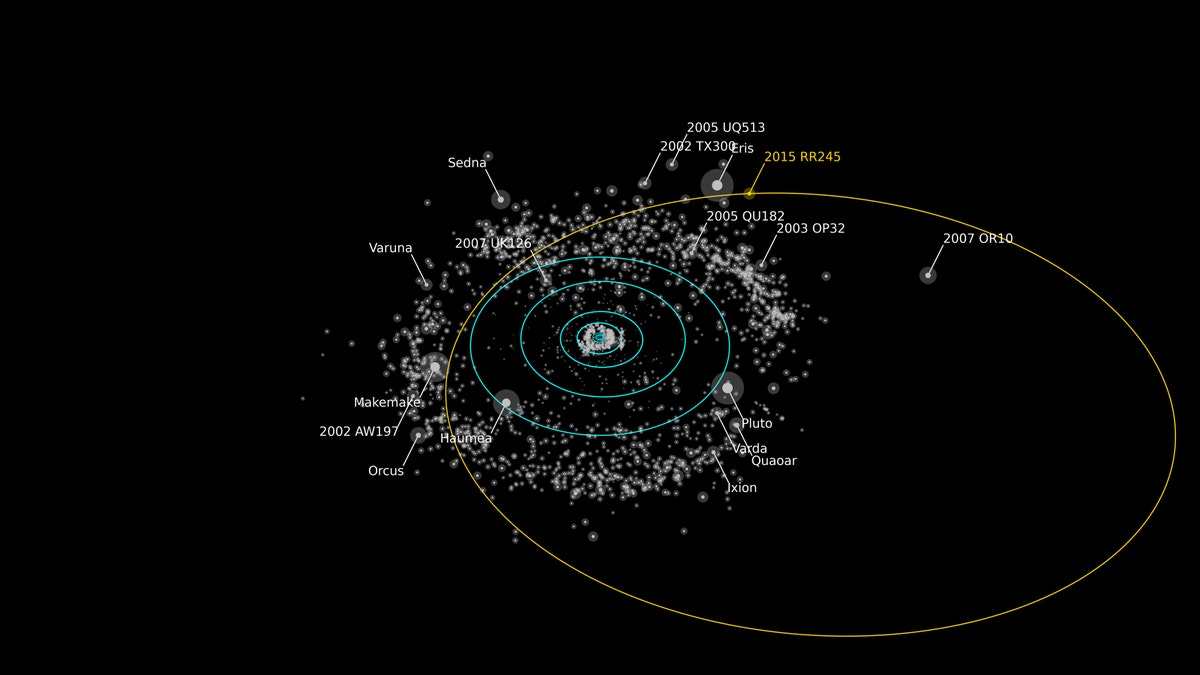
(Alex Parker/OSSOS team.)
Using a telescope at the top of Mauna Kea, Hawaii, scientists have discovered a new dwarf planet in our solar system, a body about 435 miles across that lacks a name and that researchers still know little about.
The new dwarf planet, dubbed 2015 RR245, has such a huge, highly elliptical orbit that it takes an astonishing 700 Earth years to complete one trip around the sun, and it ventures over 120 times further away from the sun than our planet does.
"The icy worlds beyond Neptune trace how the giant planets formed and then moved out from the Sun. They let us piece together the history of our Solar System,” Michele Bannister, a researcher with the Outer Solar System Origins Survey (OSSOS), which made the discovery, said in a statement. “But almost all of these icy worlds are painfully small and faint: it's really exciting to find one that's large and bright enough that we can study it in detail.”
Scientists are still trying to figure out what exactly its surface is like, which in turn will help them calculate its size more precisely.
Related:
"It's either small and shiny, or large and dull,” Bannister said.
While the object was first imaged in 2015, it wasn’t noticed by scientists until February of this year. Now it joins the roster of other dwarf planets, like Pluto, Ceres, Eris, and Makemake (which not too long ago was found to have a moon of its own), which reside in the distant edges of the solar system.
But what should it be called, besides RR245? The researchers at OSSOS can recommend a name to the International Astronomical Union.
Follow Rob Verger on Twitter: @robverger
